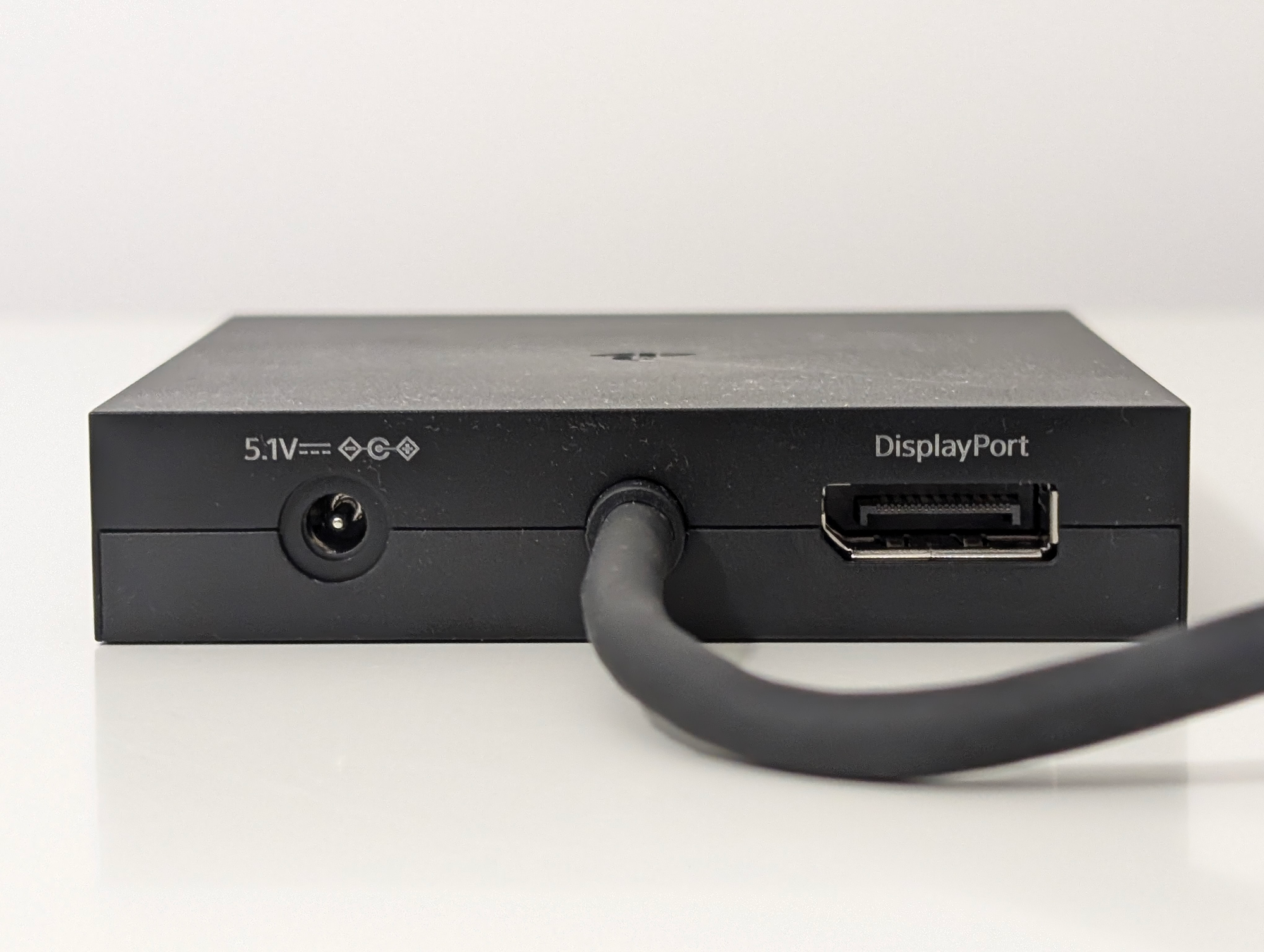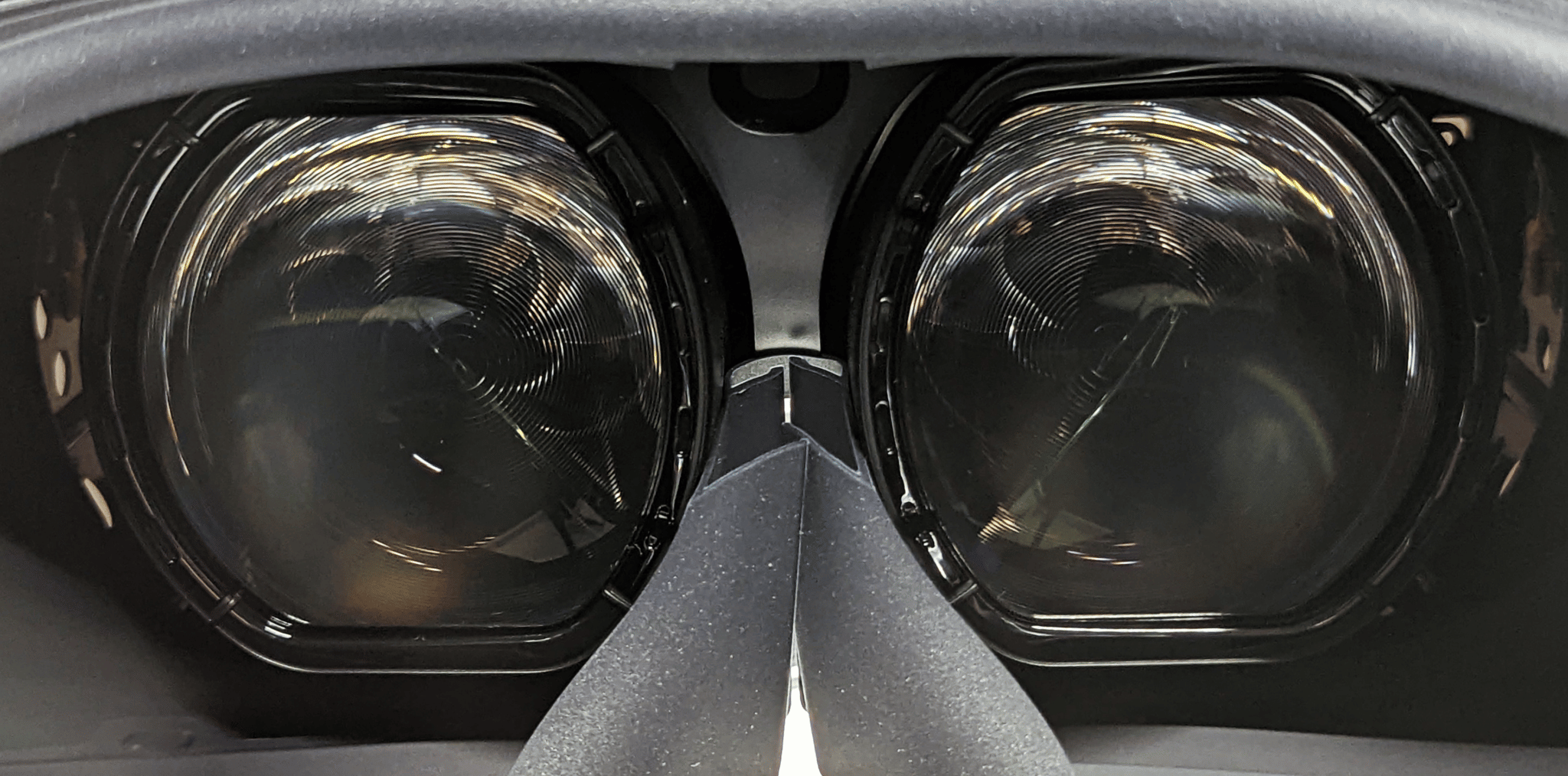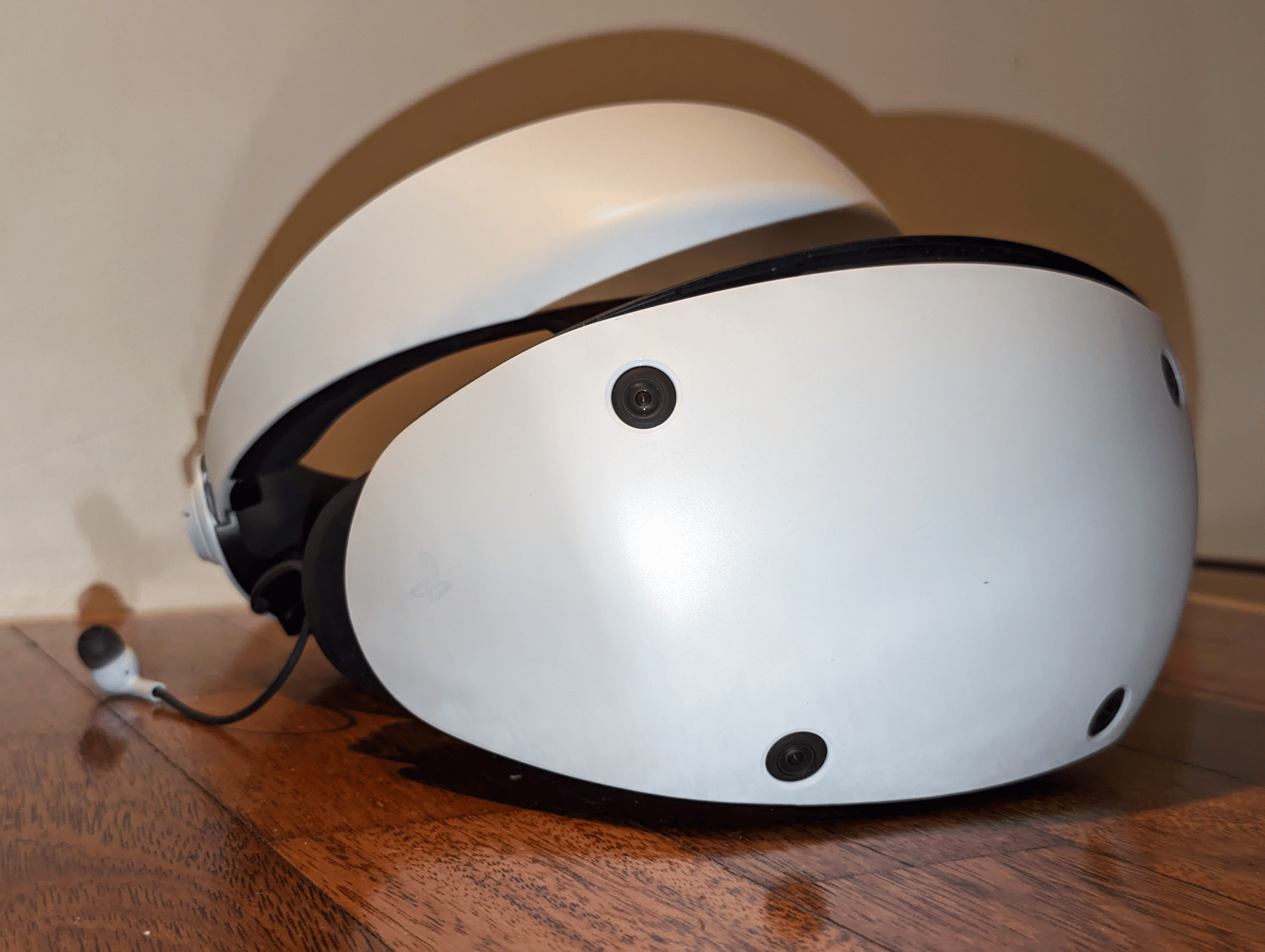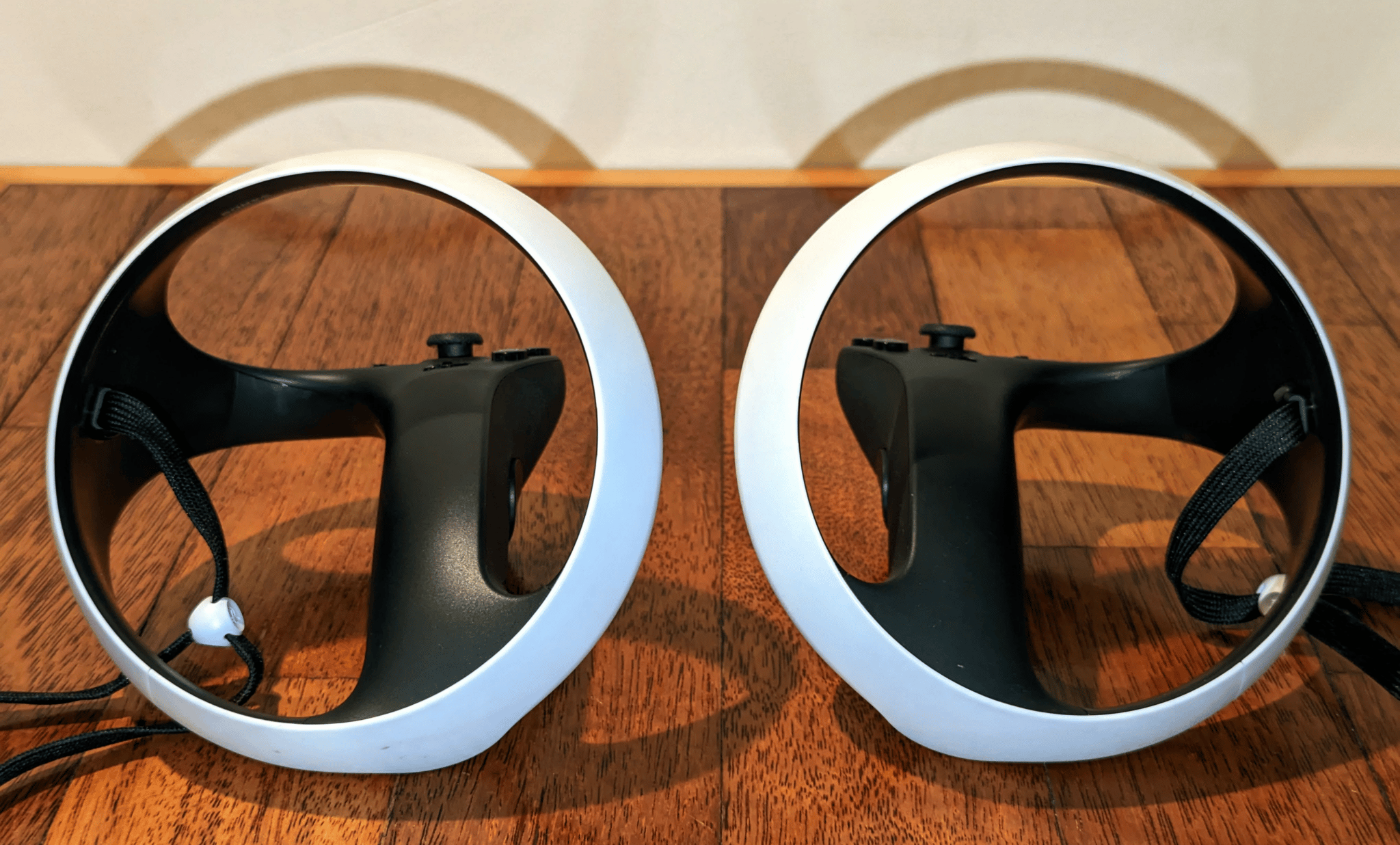PlayStation VR2’s PC adapter is now delivery, and we have been testing it for the previous few days. Here is what we consider PSVR 2 as a PC VR headset.
A New Arrival In The PC VR Market
With the adapter priced at $60 and the headset again to $550, PlayStation VR2 is now successfully a brand new $610 PC VR headset.
It isn’t fairly that easy, although. Within the package deal you will discover the adapter itself, a built-in USB cable, and a DC energy adapter. However what you will not discover is the DisplayPort 1.4 cable you could join the adapter to your PC. So if you do not have a type of mendacity round, add one other $10 or so to the associated fee.
You may additionally want Bluetooth in your PC to attach the controllers. In case your motherboard does not have this built-in and you do not have a USB or PCI-E Bluetooth adapter, that provides one other $15 or so.

However in case you have of the NVIDIA RTX 20 collection or AMD RX 6000 collection playing cards with the now-discontinued VirtualLink USB-C port, you do not want the adapter or DisplayPort cable in any respect. You may merely plug PlayStation VR2 immediately into your GPU and set up the app on Steam.
No matter whether or not you are paying $550 or $635, PlayStation VR2 is a novel arrival within the PC VR panorama. A headset priced solely barely above Meta Quest 3 with an uncompressed wired picture and OLED panels.
So does this make PSVR 2 the brand new PC VR headset of alternative?
Setup & Ease Of Use
The adapter takes within the PlayStation VR2’s single USB-C cable on one facet. On the opposite facet is a hard and fast USB-A cable to your PC, a DisplayPort port to your graphics card, and a DC energy port (an influence adapter is included within the field). So long as you’ve gotten a free energy socket close to your PC, it is a easy and painless connection.
The subsequent step is to obtain and set up the PlayStation VR2 App on Steam. This comprises the headset’s SteamVR driver and guides you thru pairing the controllers by way of Bluetooth, updating firmware, and organising the security boundary.
Some individuals have reported their USB Bluetooth adapter not working with the PSVR2 controllers, however my TP-Hyperlink UB5A labored immediately with no points.
Security boundary setup is completed contained in the headset, working the identical method as utilizing PSVR 2 on PlayStation 5. As with different VR platforms like Meta Quest, you select between a small stationary space or a room-scale boundary. For those who go for room-scale, the headset will immediate you to pan your head so it could scan your environment to recommend a boundary, and when you’re not pleased with the suggestion you’ll be able to edit it together with your controllers.
After this preliminary setup you need not preserve the PlayStation VR2 App open and even launch it once more, until you could replace the headset or controller firmware. Any more, you simply activate the headset, launch SteamVR, and also you’re good to go.
In SteamVR you’ll be able to select between 90Hz and 120Hz refresh fee, and re-launch Sony’s boundary setup expertise at any time.
OLED Shows
In contrast to each different delivery VR headset in the marketplace right now, PlayStation VR2 makes use of common OLED panels. Not LCD, not micro-OLED (which is technically very completely different), however common OLED.
Why OLED Does Infinite Distinction & LCD Cannot
LCD pixels solely present shade, not gentle, whereas OLED pixels present each (they’re self-emissive).
Meaning LCD panels want a backlight, or a number of backlights in costlier panels. So that you can see any of the picture, that backlight must be on, which limits how darkish any of the picture could be.
OLED alternatively can differ brightness on a per-pixel stage, exhibiting a brilliant gentle in a single space of the picture and full darkness in one other.
That’s why OLED can show true black and ship a near-infinite distinction ratio, whilst you’ll see a murky gray glow on LCD panels in darkish scenes.
Common OLED gives the true deep blacks and near-infinite distinction that LCD cannot, at a fraction of the price of micro-OLED. This additionally allows a wider shade gamut than common LCD for extra intense colours.
In PC VR video games like Elite Harmful, Star Wars, Squadrons, Aircar, and Beat Saber the vibrancy of PlayStation VR2’s picture blows away what you get from a Quest 3 or Valve Index. Gone are the murky gray approximations of black, and the colours can really feel actually breathtaking at instances. In case your solely expertise of VR up to now has been LCD, you is perhaps blown away.
| Headset | Show Tech | Decision Per Eye |
| Oculus Rift & HTC Vive (2016) |
OLED | 1080×1200 (PenTile) |
| Valve Index (2019) |
LCD | 1440×1600 |
| Meta Quest 2 (2020) |
LCD | ~1680×1870 (est) |
| PlayStation VR2 (2023) |
OLED | 2000×2040 (PenTile) |
| Meta Quest 3 (2023) |
LCD | 2064×2208 |
| Bigscreen Past (2023) |
Micro-OLED | 2560×2560 |
| Apple Imaginative and prescient Professional (2024) |
Micro-OLED | 3660×3200 |
Nevertheless, common OLED additionally comes with vital disadvantages which can be evident in PlayStation VR2.
The primary is that OLED tends to have more room between subpixels. This often ends in a extra seen “display door impact”, however that’s not the case right here. Sony seems to be utilizing some type of diffusion filter to keep away from that. The tradeoff of such a filter is that the picture appears to be like considerably smooth, not totally crisp, so PSVR 2’s picture seems barely much less sharp than even LCD headsets with decrease decision.
The second, extra problematic challenge is that there’s a non-uniform mounted sample noise over your entire display, referred to as mura. It’s extremely noticeable and distracting in loading and transition scenes, or when taking a look at a skybox or different low element area. How a lot you care about this when you’re in a sport will differ from individual to individual, however for me it is at all times there, and it is arguably worse than the compression artefacts you see in standalone headsets streaming PC VR, negating PSVR 2’s on-paper benefit of its lossless picture.
Lenses & Area of View
PlayStation VR2 makes use of fresnel lenses. For those who’ve tried the pancake lenses in Quest 3, Apple Imaginative and prescient Professional, or Pico 4, going again to fresnel will really feel like a major downgrade. And even when you have not, you will end up operating up in opposition to its limitations.
The fresnel lenses in PSVR 2 have a remarkably small eye field (also referred to as candy spot), that means you need to place your eyes virtually completely within the heart to get a transparent picture. Outdoors of this small space, you’ll see each blurring and shade fringing (chromatic aberration). Meaning you will usually spend the primary jiffy of utilizing PSVR 2 getting your eye positioning good, one thing you do not actually have to consider anymore with pancake lenses.

While you do handle to get your eyes into the candy spot, PSVR 2’s picture is obvious and centered to close the perimeters of the lens, although not all the best way to it. It is one of the best readability I’ve seen from a fresnel lens – however nonetheless a noticeable step down from pancake.
PSVR 2 has eye reduction adjustment, that means you’ll be able to modify how shut the lenses truly are out of your eyes. The nearer you carry them the bigger the sphere of view, however the more durable the padding will push into your face. While you carry the lenses as shut as potential the sphere of view is impressively immersive, noticeably taller than Quest, however that may come at the price of consolation for some face shapes.
Monitoring & Controllers
The headset monitoring is servicable. It doesn’t have any fixed jitter, regardless of the setting, but it surely incessantly reveals minor shifting into place when in something however ideally suited circumstances, as if to appropriate itself. That is notably obvious close to sturdy synthetic or pure gentle sources, resembling a window or PC monitor.

The controller monitoring alternatively is basically flawless for me. Whether or not I attain again, transfer them quickly, and even occlude one controller with the opposite, it simply didn’t matter. I’m assured these controllers can deal with any VR sport different inside-out headsets like Quest 2 can. The spectacular efficiency might be due to the sheer measurement of the controllers and thus their infrared LED rings. They’re greater in actual life than they seem in photos.

One drawback you will discover is that many VR video games on Steam are designed with Quest and Valve Index controllers in thoughts. This could often result in moments of “clunk”, resembling needing to carry them nearer collectively than their rings enable, or barely offset alignments. The benefit of utilizing PSVR 2 on PS5 is that each sport was designed for precisely these controllers, and also you lose that on PC.
What’s Sorely Lacking
On PlayStation 5, PSVR 2 helps eye monitoring (which may energy foveated rendering), excessive dynamic vary (HDR), and precision haptics on the controllers. Uniquely amongst delivery VR programs, it even options headset rumble and resistive controller triggers, for a richer haptic expertise than any of its rivals.
Sadly, none of those standout options can be found on PC. Meaning no eye-tracked avatar in VRChat, and no foveated rendering in Microsoft Flight Simulator or DCS, for instance.
PlayStation VR2’s help on PC is the naked minimal. Certain you get the fundamentals of show, monitoring, and controllers. However this headset is able to a lot extra, and when you’re solely utilizing it on PC these options are lifeless weight and price.
We have reached out to Sony to ask whether or not it has plans to carry these options to PC in a future software program replace, and can replace this text if we get a response.
Unusual Rotational Warping Distortion
Lacking options apart, utilizing PlayStation VR2 on PC feels similar to utilizing it on PlayStation 5 – with one main distinction.
When rotating my head facet to facet horizontally I see a warping distortion, the place vertical straight traces bend and curve. This is not reprojection, as a result of it solely occurs on one axis and even once I disable SteamVR’s Movement Smoothing. It additionally solely occurs in PSVR 2 on my PC, not another headset.
Given this challenge does not occur on PS5, I can solely assume it is a bug with the present PSVR 2 SteamVR driver. We have requested Sony about this too, and also will replace the article if we get a response.
Conclusion
PlayStation VR2 is successfully a novel new PC VR headset. However on PC it lacks its flagship options, and whether or not you like PSVR 2’s smooth however wealthy picture over the sharp however uninteresting different of its LCD rivals will come down to private desire.
I additionally skilled a warping challenge which I would contemplate a dealbreaker if it could’t be mounted, but it surely’s unclear whether or not that is widespread or only a bug.
For those who decide up the PlayStation VR2 PC Adapter and have your individual ideas, particularly concerning the obvious warping challenge, please tell us within the feedback beneath.

